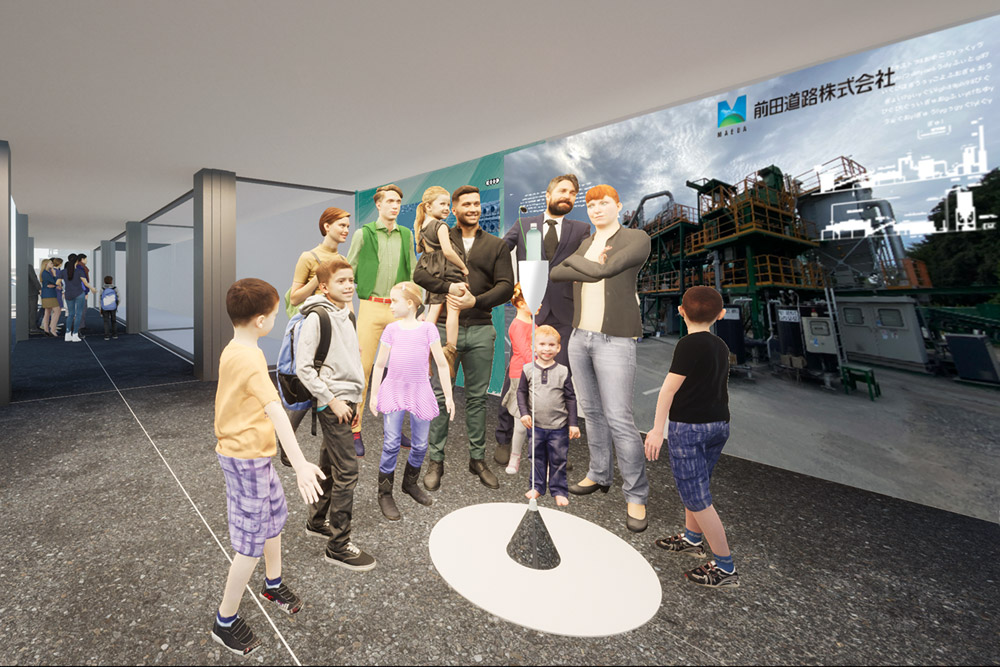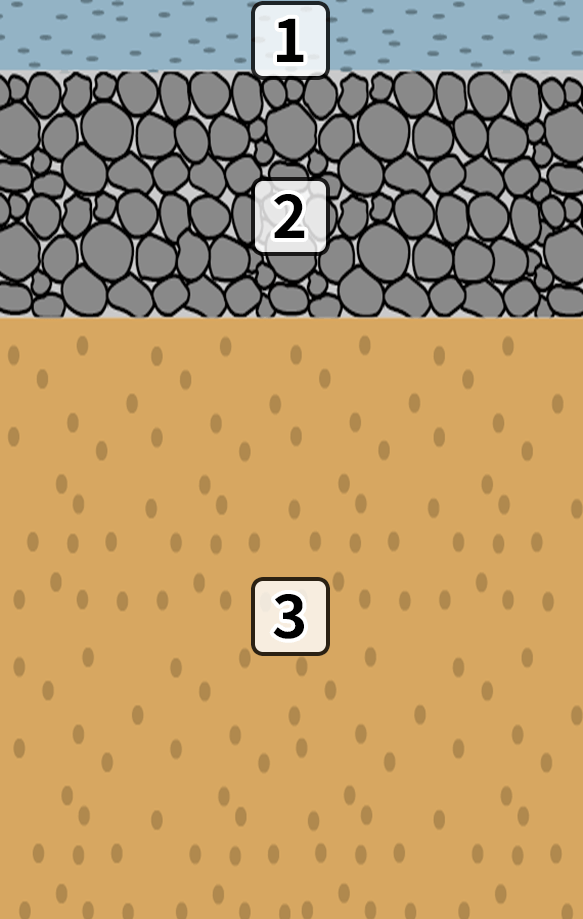Through the promotion of road construction using carbon dioxide (CO2), which is rarely used in the world, we aim to create a society that is friendly to both people and the environment.
At the Expo’s Carbon Recycling Factory RITE* facility, visitors can explore the future of road surfacing where CO2-based road base materials and asphalt pavements are installed, allowing visitors to experience the comfort of walking on future roads.
The exhibition booth features a cross-sectional model of a road, allowing visitors to see the usually hidden parts beneath the surface of the “roads people usually walk on”.
In the experiment corner, visitors can learn about the “wonders of science” (such as how road base materials absorb carbon dioxide).
*Research Institute of Innovative Technology for the Earth (RITE)
Initiatives Friendly to People and the Environment
What is CO2 fixation
CO2 reacts with calcium hydroxide to form calcium carbonate.
This reaction is commonly known as the cloudy white phenomenon seen when exhaling into limewater.
This reaction is used to convert gaseous CO2 into solid form for use as construction material.
Calcium carbonate can be produced by treating calcium hydroxide and CO2 contained in concrete debris from construction sites together.
At the RITE facility, the produced calcium carbonate is used as a material for the road base layer and asphalt pavement.
Experience walking on unique roads made using CO2 for the first time and discover the excitement of walking on something different from the roads you usually walk on.
A reservation for the RITE tour is required to visit the facility.
Information on the reservation process will be provided at a later date.








